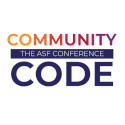The JXPath Component
The Consider this example:
This XPath expression is equivalent to the following Java code:
XPath was standardized by W3C and is used in both XSLT and XPointer. If you want to find out more about XPath, a good place to start is an excellent XPath Tutorial by W3Schools The official definition of XPath by W3C can be found at XML Path Language (XPath) Version 1.0 Primary applications of JXPath are in scripting: JSP and similar template/script based technologies. However, programmers who prefer XML-flavored APIs, should consider JXPath as an alternative to other expression languages as well. JXPath is a must-have tool for those who work with mixtures of Java objects and XML and need to frequently traverse through graphs of those. Some XPath expressions may cause Java code execution, so you should not allow arbitrary expressions from untrusted input, which could in turn lead to security issues in your environment. Future enhancements may include the addition of an allow list to let developers provide a stricter execution environment for expressions. JXPath documentation currently contains: ReleasesSee the JXPath Downloads page for current/previous releases. |



